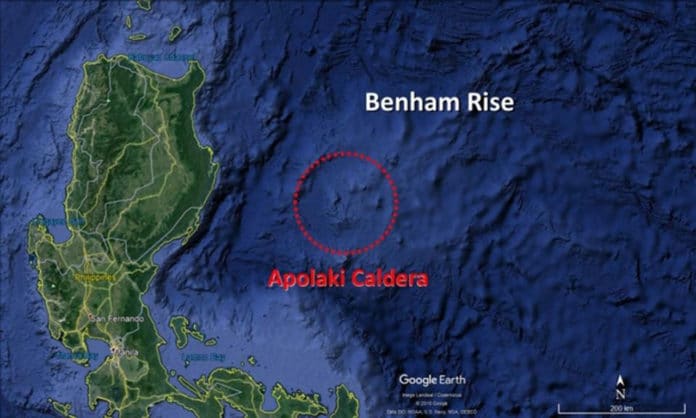A group of Marine scientists has recently discovered a large igneous massif east of the island of Luzon, located on the bottom of the Philippine Sea. And according to the study published, this large igneous massif represents the remains of earth’s largest known caldera called Apolaki caldera. Apolaki means giant lord in Filipino and is the mythical god of the sun and war.
The caldera has a diameter of ~150 km (93 miles), twice the size of the famous Yellowstone caldera in Wyoming (U.S.). What’s more, it is a large, unique form of a volcanic crater formed by the collapse of a volcano into itself. Features like a breached rim, intra-caldera benches, and a resurgent dome indicate a multi-phase volcanic history consisting of both quiet and explosive eruptions.
Also known as the Philippine Rise, the Benham Rise is a seismically active undersea region and an extinct volcanic ridge located in the Philippine Sea, approximately 250 km (160 mi) east of the northern coastline of Dinapigue, Isabela.
The marine geophysicist’s group that discovered the existence of the world’s largest caldera consists of New Zealand-based Filipino scientist Jenny Anne Barreto, along with co-authors Ray Wood and John Milsom.
UP MSI researcher Jeffrey Maloles said, “We do what we do, to raise awareness on the importance of our seas to food supplies, ecological stability, and physical climate in the country. For a field that is underappreciated and doesn’t pay much, we do this — without sounding cheesy — para sa bayan (for the country).”
The study is published in the journal Marine Biology.
